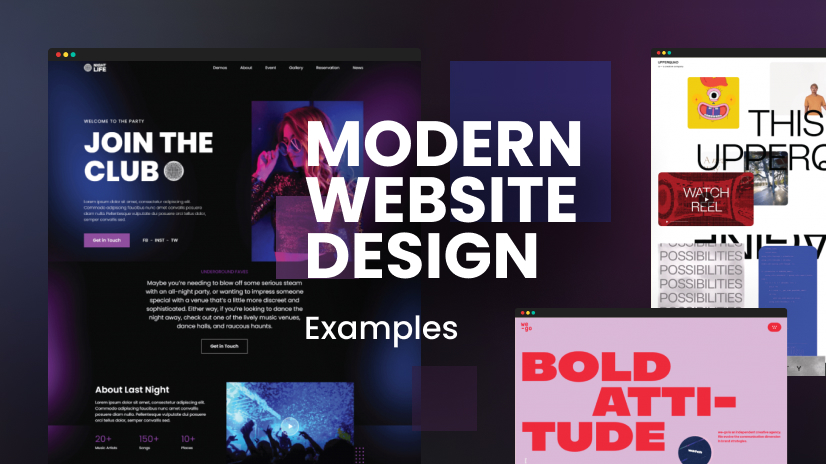Custom Website Design Solutions to Fit Your Business Needs
Custom Website Design Solutions to Fit Your Business Needs
Blog Article
Leading Tips for Creating an Impactful Web Site Design That Converts
To accomplish this, one must consider a selection of aspects, including understanding the target audience, prioritizing customer experience, and enhancing for mobile platforms. The strategic usage of compelling call-to-actions and a distinct aesthetic pecking order plays a critical role in leading customers via their trip.

Understand Your Target Market
Comprehending your target audience is basic to efficient site design, as it prepares for producing an engaging customer experience. Determining who your customers are, including their demographics, preferences, and actions, allows designers to customize the site's web content, design, and functionality to fulfill certain needs.
Performing extensive market research is critical in this process. Studies, interviews, and analytics can give important understandings into customer assumptions and pain points. By assembling this data, developers can produce customer personalities that stand for different sectors of the audience, making certain that style decisions are informed and appropriate.
In addition, understanding the target market aids in choosing appropriate design aspects such as shade plans, typography, and imagery that resonate with individuals. A site that speaks directly to its target market fosters a sense of link and trust fund, encouraging longer brows through and greater conversion rates.
Ultimately, a user-centered method to web site design not just enhances user satisfaction however likewise sustains company purposes by driving involvement and commitment. By focusing on the demands and preferences of the target audience, a web site can efficiently offer its purpose and achieve preferred results.
Prioritize User Experience
To boost the total performance of a web site, focusing on customer experience (UX) is vital (Website Design). A properly designed UX ensures that visitors can navigate the site effortlessly, locate info swiftly, and involve with content meaningfully. This results in boosted individual fulfillment and higher conversion rates
Begin by carrying out user-friendly navigation. Menus should be realistically structured, allowing users to situate vital locations of the site with minimal initiative. Uniformity in style elements, such as color systems and typefaces, promotes familiarity, which is essential for maintaining customer interaction.
Additionally, consider the filling rate of your site. A hold-up of simply a few secs can cause considerable drop-offs, as users are much less likely to wait for a slow-loading web page. Enhancing pictures and optimizing code can boost efficiency and keep site visitors.
Furthermore, quality in content discussion is vital. Use succinct, engaging language and separate message with visuals to improve readability. By prioritizing individual experience, you not just create a much more delightful setting for visitors however additionally strengthen your brand's reputation. Ultimately, a focus on UX is a financial investment in the lasting success of your site.
Optimize for Mobile Gadgets
Enhancing for mobile tools is crucial in today's electronic landscape, where an increasing number of individuals gain access to i thought about this web sites via smart devices and tablet computers. A mobile-friendly layout not only enhances user experience but also plays a significant role in improving online search engine rankings. To accomplish this, it is vital to take on a receptive style that immediately adapts to various screen dimensions and alignments.

Loading rate is another crucial factor; mobile customers are usually less person and anticipate fast accessibility to info. Optimize pictures and leverage internet browser caching to enhance efficiency. Lastly, test your internet site on several devices and display resolutions to identify and fix any kind of potential use problems. By prioritizing mobile optimization, you make certain that your site continues to be competitive and properly engages a wider audience.
Usage Compelling Call-to-Actions
A web site's effectiveness typically rests on its ability to direct site visitors towards wanted activities, making engaging call-to-actions (CTAs) important elements of layout. CTAs function as the pivotal points that guide individuals to involve with the website, whether that means buying, signing up for an e-newsletter, or downloading and install a source.
To produce effective CTAs, go right here clarity is paramount. Usage succinct language that clearly communicates the activity you desire the individual to take.
Furthermore, consider making use of directional hints, such as arrowheads or pictures, to guide customers toward these switches. By concentrating on these elements, organizations can dramatically improve individual engagement, driving conversions and ultimately accomplishing their website's objectives.
Focus on Visual Hierarchy
Reliable web site design counts heavily on a well-structured aesthetic hierarchy that guides users with go to this web-site web content perfectly. By arranging aspects in a fashion that prioritizes info, developers can improve customer experience and help with decision-making. This includes making use of size, shade, comparison, and spacing strategically to attract attention to the most essential elements of a page.
Making use of larger typefaces for headings and subheadings develops a clear distinction between various areas, allowing individuals to check material effortlessly. Furthermore, utilizing different shades for buttons and calls-to-action can catch individual focus and encourage interaction. Whitespace is one more essential component; it avoids mess and makes it possible for users to focus on crucial messages without distractions.
Images and graphics ought to match the message while additionally sticking to the established hierarchy, strengthening the general message (Website Design). Uniformity in style components, such as color design and typography, further strengthens the visual pecking order, making navigation instinctive

Conclusion
In conclusion, reliable web site design requires a comprehensive understanding of the target audience, prioritization of customer experience, and mobile optimization. Eventually, a well-executed website layout serves as an essential element in driving user activities and achieving service objectives.
Report this page